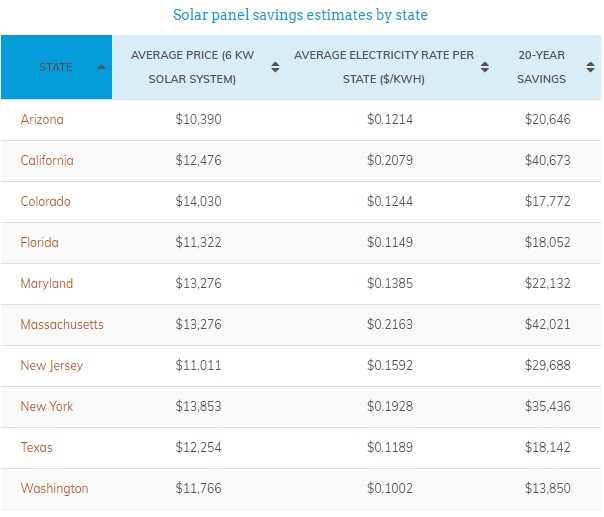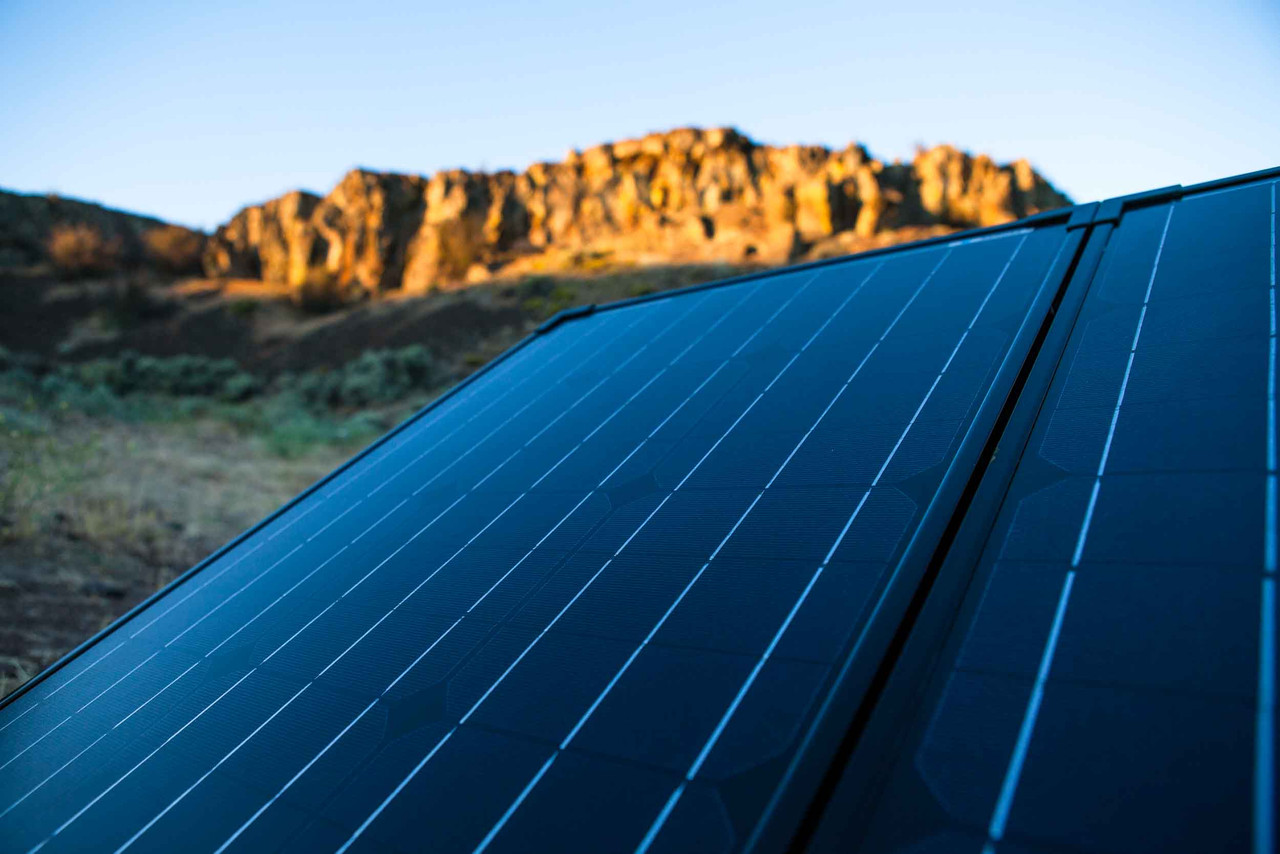Solar Panels ROI: How to Calculate It In Your State
Investing in solar can have a significant impact on both the environment and your wallet.
While the prospect and upfront costs of installing solar panels can be daunting, the many financial benefits can make it well worth the initial effort.
The financial return on investment or "solar panels ROI" that everyday people can get from solar power is one of its biggest drawcards. The cost savings you can see from your investment are one of the biggest reasons people switch to solar power.
Of course, many eco and lifestyle benefits come from switching to solar. But the environmental impact of changing to a renewable energy source can't be easily measured in dollars and justified in the family budget. Solar power ROI, however, makes a compelling financial case for switching to solar energy.
Solar ROI can help you get a clearer picture of solar power's financial value. You can decide if solar panels are worth the investment and installation effort by calculating your ROI or solar panels payback period.
In this article, we'll tell you everything you need to know about the financial benefits of solar power and how they provide value for your home.
Learn how much money you can save on energy bills in the USA and how many years it will take for your solar panels to "pay for themselves.”
What is the average cost of solar in the U.S.?
Switching to solar power is always an excellent investment in the environment, and it also future proofs your ongoing living costs. With energy and fuel prices soaring, households across the USA will only see increased benefits from solar over the next few years.
On average, solar panel costs in the U.S. range from $17,612 to $23,236 for a 10 kilowatt (kW) installation (that's after the federal solar tax credit). The average solar panel price per watt in the United States can range from $2.38 to $3.14.
The Federal Solar Tax Credit (also known as the Investment Tax Credit or ITC) allows U.S. residents to receive a 26% tax credit on any money they spend towards a solar panel installation. This tax credit will end in December 2021, so get in quick to get the best possible savings on your installation.
While the Federal Solar Credit applies across the USA, other financial benefits from solar power will differ from state to state. The savings a household can get from solar will vary across the USA.
Energy costs differ from state to state, as do the rebates and financial incentives available for switching to solar. You can see the latest solar policies and incentives by state by visiting the Database of State Incentives for Renewables & Efficiency (DSIRE).

The amount of solar electricity you can produce will also differ from one state to another. A household in Arizona or Nevada could run on solar power year-round. But a home in Alaska with the same number of solar panels may produce solar power only in the summer months, lowering their potential for savings.
The size of your property, how many solar panels you install, how much energy your household uses, and how much sunlight your solar panels receive are all factors that impact your solar panel’s payback period.
Suppose you have more residents in your home, a bigger house, or more amenities to power. In that case, your solar panel costs will naturally rise, just as your traditional energy costs would be more significant.
How do you benefit from solar panels?
Solar energy is long-lasting and low maintenance, making it incredibly efficient to run. The bulk of the costs associated with solar power come from hardware and solar panel installation costs. These setup costs might be intimidating, but you'll find that you quickly benefit from the initial investment.
Here are some of the common ways you can save and benefit financially from solar panels.
Offsetting your energy consumption
Solar power will always offset your traditional electricity consumption; it may even entirely replace the need to use grid-provided electricity.
The average American household spends over $1,500 a year on fossil fuel electricity. By installing several solar panels on your property, you could replace up to 100% of your energy needs and save up to $100 every month. Plus, energy costs are currently rising at around 2.2% per year, while solar power installation costs get cheaper.
The higher your current electricity bill, the shorter your expected solar panel’s payback period, and the more likely you are to benefit from offsetting your energy consumption with solar power.
Feed-in tariff for excess energy
Solar feed-in tariffs can provide homeowners and businesses with substantial financial benefits. A feed-in tariff is a solar incentive that pays solar power owners for their excess solar energy. Yes, you read that right; utilities companies will pay you a certain amount per unit of solar electricity sent to their grid.
A solar feed-in tariff is usually a fixed-price incentive locked in over a long-term contract period, usually 10 to 20 years. These FITs provide property owners with a long-term, stable financial solar incentive.
Sure, feed-in tariffs sound great, and they're widely used in several other countries. Unfortunately, they aren't available everywhere in the USA. Currently, there are few states which offer or have previously offered solar feed-in tariffs. These states include California; Vermont, Washington, Oregon, and some cities in Florida and Wisconsin.
What is the average payback period for solar panels in the U.S.?
The payback period or ROI on solar power is the amount of time it will take for your solar panel system to "pay for itself," as the saying goes. Estimating your payback period is an integral part of budgeting for your solar installation.
It may surprise you that according to Energyusage.com, the average solar payback period in the U.S. is only eight years!
The exact rate at which your solar panels will pay for themselves will vary based on how efficient your solar panels are and how much you were paying previously for traditional energy.
Solar panels can last a long time, sometimes over 25 years, while traditional energy sources are growing increasingly expensive. So, over the course of several decades, solar panels may save you even more than expected, and the payback period could be shorter than you anticipated.
How is the solar panel payback period calculated?
Several savings factors will impact your solar panel payback period. The most significant contributing factors are the initial gross costs, offset by your traditional electricity savings, plus any savings from net metering or other government and local incentives.
The gross cost of the solar panel system
The gross cost of installing solar power in your home or business will depend on the number of panels you need for the system, the amount of hardware or equipment required, and the installation costs.
Energy generation
Some practical constraints impact how much solar power you can generate. These include the size of your roof, local weather, and the orientation of your property. You can use our Solar Power Calculator to figure out much energy you need compared to how much you can generate.
Electricity bill savings
How much you could save on your energy bills will come down to the available sunlight in your region and your general energy usage and costs. If you have expensive traditional electricity bills, your solar payback period will be shorter.
Tax credits, rebates, and incentives
The federal government and local state incentives for solar power can change regularly, but they are usually either tax credits, solar rebates, or installation incentives. Thanks to these numerous programs, you may be able to reduce the cost of your solar panel installation by up to 50%!
Net Metering
Net-Metering or feed-in-tariffs in the USA allow small-scale solar electricity generators to receive a payment for any surplus solar energy their panels produce.
Net metering is not available in every state, but if it's available locally, then you should undoubtedly take advantage of the opportunity! You can learn more about state-specific solar financial incentives in the USA on our blog.
If net metering isn't available in your region, you can use a solar battery bank as an alternative to store and save energy. A solar battery bank connects to your solar system and stores excess energy instead of pushing it into the power grid.
Battery banks can save up solar power for use outside of daylight hours, reducing your reliance on the grid. With a battery, you can even live off-grid, which can be a low-cost option if there are no net metering or FIT incentives in your region.
Calculate your solar ROI
- To calculate your ROI, start by estimating your gross costs. We recommend you get at least three quotes from solar contractors to estimate how much your gross costs will be.
- Then, subtract the value of any up-front federal or state incentives and rebates.
- Next, add up the annual financial benefits, such as reduced electricity costs or ongoing tax incentives.
- Lastly, divide your combined gross costs by the expected annual financial benefits. This calculation will tell you the number of years it would take to pay back your panels.
For example, if installation costs are $20,000 and the solar power system will save you $2,500 a year off your energy bills, then your solar panel payback or ROI period would be eight years ($20,000/$2,500 = 8).
Most people will find that the solar panel system has a warranty period or lifespan that goes far beyond your payback period. That means every month and year that you use the system after the payback period is a financial gain!
Which states have the best solar payback period?
Some states with high energy costs can see a concise payback period for solar power. According to Environment America's Shining Cities 2019 report, these are the five states with the best solar payback period.
Every generator will have different requirements for charging. Larger generators will need more solar panels and more sunlight to power an entire household. If you're using your generator for several days in a row, it will need to be recharged. The overall amount of energy that a solar generator can produce will always be determined by both the amount of sunlight available and the number of solar panels you have installed.
- 1. New Jersey – 5.5 year payback period.
- 2. Massachusetts – 5.5 year payback period.
- 3. California – 5.9 year payback period.
- 4. South Carolina – 7.5 year payback period.
- 5. Rhode Island – 7.6 year payback period.
How much can you save with solar panels?
Some solar backup generators work with solar panels that can be located far away from the actual generator itself. Other generator models have panels mounted directly to or closely linked to the actual generator unit.
Solar panel savings 2018
Source: EnergySage.com

Make the switch to solar and save big!
Solar is a reliable, low maintenance, and renewable energy source that makes an excellent investment. Thanks to rapid advances in solar power technology, it is increasingly affordable to make a power switch.
Solar panels have proven to be some of the cheapest and most easily accessible renewable, green energy forms available today. By installing solar panels on your tiny home, van, R.V., or primary home, you can capture energy from sunlight at a fraction of the cost of traditional electricity.
So what are you waiting for? Start planning your solar power installation today!











